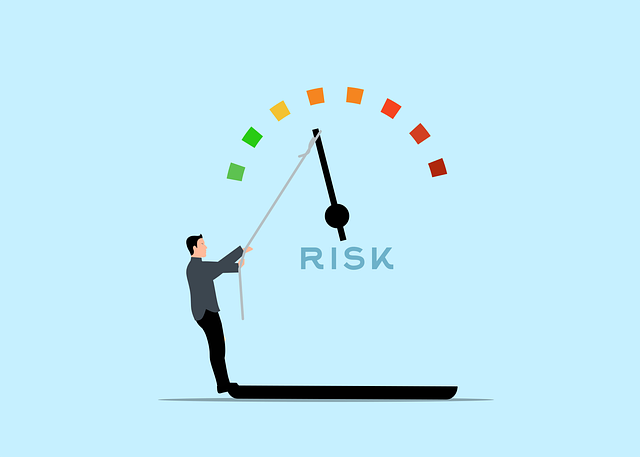Understanding ISO 27001: Information Security Policy
Oct 17, 2024
In today’s increasingly digital world, information security has become a critical concern for organizations of all sizes. Businesses are constantly threatened by cyber-attacks, data breaches, and other security risks, which makes protecting sensitive information paramount. One of the most widely recognized standards for information security management is ISO 27001. ISO 27001 is an information security standard published by the International Organization for Standardization (ISO) in collaboration with the International Electrotechnical Commission (IEC), and is a part of the ISO/IEC 27000 series of standards. This article delves into the key aspects of an ISO 27001-compliant Information Security Policy (ISP), covering what ISO 27001 is, who needs it, its key requirements, and what is necessary for an organization to develop a compliant policy.
What is ISO 27001?
ISO 27001 is an internationally recognized standard for managing information security. Created by the International Organization for Standardization (ISO) and the International Electrotechnical Commission (IEC), this global standard outlines the requirements for establishing, implementing, maintaining, and continually enhancing an Information Security Management System (ISMS).
The core objective of ISO 27001 is to help organizations protect the confidentiality, integrity, and availability of their information through a systematic approach that includes people, processes, and IT systems. By adopting ISO 27001 and other ISO management system standards, organizations can establish credibility and trust in their information security practices. These standards help organizations identify risks, implement security controls, and ensure that appropriate mechanisms are in place to safeguard data against both internal and external threats.
Achieving ISO 27001 certification signifies that an organization adheres to best practices in information security management and has a robust framework to manage data risks. This certification is not only beneficial for an organization’s internal processes but also serves as a trust marker for clients and partners who may require assurances about data protection. Additionally, having an ISO 27001 Information Security Management System (ISMS) enhances an organization's reputation and builds trust with customers by demonstrating robust information security measures and effective risk management.
Who Needs ISO 27001?
ISO 27001 is relevant to any organization, regardless of size, industry, or location, that processes, stores, or transmits sensitive information. This includes businesses in sectors like finance, healthcare, IT, government, legal services, e-commerce, and telecommunications, to name a few. Additionally, organizations that handle personal data, intellectual property, or proprietary business information will find ISO 27001 essential to safeguard their assets.
In many cases, businesses pursue ISO 27001 certification to meet regulatory requirements or contractual obligations. For instance, companies that provide services to government agencies or work with clients in highly regulated industries may need to demonstrate compliance with specific data protection standards. Certification can also provide a competitive advantage by reassuring customers, partners, and stakeholders that the organization takes information security seriously.
What are the ISO 27001 Requirements?

ISO 27001 outlines a structured framework for establishing an ISMS (Information Security Management System), which is divided into two main parts: the requirements of the ISMS (Clauses 4-10) and the security controls (Annexes). These information security controls are crucial for establishing best practices and guidelines for safeguarding information security. They help manage risks, protect confidential data, and meet compliance requirements for organizations seeking certification.
Clauses 4-10: The ISMS Structure and Requirements
The first part of the ISO 27001 standard, Clauses 4 through 10, outlines the fundamental requirements for creating and maintaining an effective ISMS. These clauses provide a "meta" description of the Information Security Program, describing how an organization should set up, manage, and improve its security framework. In brief, these clauses cover:
-
Clause 4 - Context of the Organization: Understanding the internal and external issues, stakeholders, and legal requirements that could impact the ISMS.
-
Clause 5 - Leadership: Establishing top management's commitment to information security, including the definition of roles, responsibilities, and authorities.
-
Clause 6 - Planning: Identifying and assessing information security risks and opportunities and establishing objectives and plans to address them.
-
Clause 7 - Support: Allocating the necessary resources, ensuring competence, and promoting awareness of the ISMS among employees.
-
Clause 8 - Operation: Implementing the security controls and processes needed to mitigate identified risks and ensure the effective management of information security.
-
Clause 9 - Performance Evaluation: Monitoring, measuring, analyzing, and evaluating the effectiveness of the ISMS.
-
Clause 10 - Improvement: Continually improving the ISMS to adapt to changing threats and organizational needs.
Annexes: Administrative, Technical, and Physical Controls

The second part of ISO 27001 consists of Annexes that list specific security controls to be implemented as part of the ISMS. The applicability of these controls depends on the organization’s individual risks and requirements. With the 2013 version of ISO 27001, there were Annexes 5-18, covering a wide range of controls, from information security policies to supplier relationships. However, ISO 27001:2022 has streamlined this into Annexes 5-8, which are structured based on their implementation perspective (organizational or administrative, people, physical, or technological controls).
It is crucial to understand that not all controls will be applicable to every organization. Each business must assess its unique risk profile to determine which controls are necessary for its specific context. Additionally, training on communications security is essential as part of the ISMS to ensure that best practices and guidance are effectively incorporated.
What is Needed for the ISO 27001 Information Security Management System (ISMS) Policy?
Developing an Information Security Management System (ISMS) Policy is a fundamental step in becoming ISO 27001 compliant. Information security management systems play a crucial role in ISO 27001 certification by helping organizations manage and protect sensitive data. The ISMS Policy sets the direction and framework for information security within an organization. To align with ISO 27001, the ISMS Policy must address several key clauses, as detailed below:
ISO 27001 - Clause 4: Context of the Organization

To be ISO 27001-compliant, the ISMS Policy must consider the context of the organization. This involves identifying internal and external factors that could impact information security, such as the organization’s size, structure, market, and technology landscape.
Key considerations include:
-
Identifying stakeholders, including customers, regulators, partners, and employees, who have an interest in the organization’s information security.
-
Identifying the context of the organization to ensure the ISMS aligns with the mission, objectives, and obligations of the organization itself.
-
Defining the scope of the ISMS, which specifies the boundaries and applicability of the ISMS based on the organization’s activities, locations, and information assets.
The policy should clearly state how the organization intends to handle these factors and define its overall approach to information security risk management.
ISO 27001 - Clause 5: Leadership

Top management plays a critical role in driving information security within an organization. The ISMS Policy should outline management’s commitment to supporting the ISMS, providing necessary resources, and promoting a culture of security awareness.
Essential elements include:
-
Assigning specific roles, responsibilities, and authorities for information security.
-
Establishing an information security policy (or WISP - Written Information Security Program) that aligns with the organization’s strategic objectives.
-
Creating a policy statement that reflects management’s commitment to preserving the confidentiality, integrity, and availability of information.
ISO 27001 - Clause 6: Planning (Actions to Address Risks and Opportunities)

Effective planning is at the heart of an ISO 27001-compliant ISMS. The ISMS Policy must describe how the organization will identify and address risks and opportunities related to information security. This involves:
-
Defining the risk management process that ensures risks are evaluated in a way that provides consistent and comparable results.
-
Conducting a risk assessment to identify potential security threats, vulnerabilities, and impacts on information assets.
-
Establish a risk treatment plan that defines how controls will be implemented to mitigate risks identified during the assessment process.
-
Setting measurable security objectives and determining the necessary actions to achieve them.
The risk assessment process is critical for the ISMS (as the ISMS itself is designed to effectively manage risks) and a core focus during the ISO 27001 certification process. Risk management is further detailed below.
ISO 27001 - Clause 7: Support
For the ISMS to succeed, an organization must provide adequate support. The policy should specify how the organization will:
-
Allocate sufficient resources, including personnel, technology, and funding, to support the ISMS.
-
Ensure that staff involved in information security are competent and have the necessary training and awareness.
-
Promote communication and documentation practices that support the ISMS’s ongoing management.
Clause 7 will also provide specific direction regarding how policies and procedures will be structured and essentially define the "blueprint" for how the ISMS is documented.
ISO 27001 - Clause 8: Operations (Operational Planning and Risk Management)

The ISMS Policy must include guidelines for the operational aspects of information security. This involves implementing controls to manage security risks effectively and responding to incidents promptly. The operational aspects cover:
-
Defining and implementing security controls to mitigate identified risks.
-
Establishing procedures for managing information security incidents and ensuring business continuity. Having an information security incident management plan is crucial for proactively preventing crises such as data loss and ensuring that risk management processes are in place.
-
Conducting regular reviews and assessments of the ISMS to ensure its effectiveness in meeting the organization’s information security objectives.
In many ways, Clause 8 is execution of Clause 6, where the rubber of the risk identification, assessment, and treatment activities meet the road.
ISO 27001 - Clause 9: ISMS Performance Management

To maintain compliance with ISO 27001, organizations must continually evaluate the performance of their ISMS. A crucial part of this is implementing a comprehensive risk management process, which plays a vital role in minimizing risks and ensuring business continuity. The policy should outline:
-
How the organization will monitor and measure the effectiveness of its ISMS.
-
The methods used to analyze security incidents, nonconformities, and results from audits or reviews.
-
The processes for conducting internal audits and management reviews to identify areas for improvement.
This clause provides clear guidance and requirements for how the ISMS performance must be reported to senior management. Even in cases where an organization is not looking to fully implement or certify to ISO 27001 standards, the reporting requirements outlined in Clause 9 can help an organization address the reporting requirements of multiple other standards, like SOC2 or PCI, or regulatory requirements, like HIPAA or the FTC Safeguards Rule.
ISO 27001 - Clause 10: Continual Improvement

An ISMS must evolve with the changing security landscape and organizational needs. The ISMS Policy should emphasize the commitment to continually improving the system. This includes:
-
Implementing corrective and preventive actions based on findings from internal audits, management reviews, and risk assessments.
-
Adjusting the ISMS to address new risks, opportunities, or changes in the organization’s context.
Essentially ISO 27001 Clause 10 provides the structure for how the organization will identify opportunities for improvement and conformances (situations where the ISMS is not adequately executed) related to the ISMS. This ensure that the ISMS is appropriately reviewed, and continually improving.
ISO 27001: Annexes
The ISMS Policy should reference the applicable Annexes from ISO 27001 that define the specific administrative, technical, and physical controls. These controls, based on the organization’s risk profile, help mitigate identified risks and strengthen information security.
-
ISO 27001:2013 includes Annexes 5-18, which cover controls such as access control, cryptography, and physical security.
-
ISO 27001:2022 streamlines these controls into Annexes 5-8, focusing on a more outcome-based approach.
Organizations must carefully select appropriate security controls relevant to their operational context and justify why any non-applicable controls are excluded. Ultimately, the inclusion or exclusion of each ISO 27001 Annex control should be based on a defensible risk assessment and decision. It's important to note, that the risk decision for each annex control must be consistent with the organization's risk management process and overall risk appetite (level of risk acceptance).
Managing Risks - Information Security Risk Assessment

An information security risk assessment is a fundamental component of an ISO 27001-compliant Information Security Management System (ISMS). This process involves systematically identifying, assessing, and prioritizing information security risks, and implementing appropriate controls to mitigate an manage risks.
The risk assessment process begins with identifying the organization’s information assets, which can include data, systems, and infrastructure. Once the assets are identified, the next step is to identify potential threats to those assets. These threats can be diverse, ranging from cyber threats like hacking and malware to physical threats such as theft or natural disasters.
Assessing vulnerabilities is the next critical step. This involves evaluating the weaknesses in the organization’s systems and processes that could be exploited by identified threats. Once vulnerabilities are assessed, the organization can then assess the risks by determining the likelihood and potential impact of each identified threat exploiting a vulnerability.
Prioritizing risks is essential to ensure that the most significant threats are addressed first. This prioritization is based on the likelihood of occurrence and the potential impact on the organization. Once the risks are prioritized, the organization can implement controls to mitigate or manage these risks effectively.
Additionally, risks can be evaluated using various qualitative (such as a high, medium, or low scale) and quantitive (like hard dollar amounts or timeframes) methodologies. What's important is that whatever process the organization utilizes to assess risks is consistent to ensure risk treatment activities and decisions is also consistent.
By following this structured approach to information security risk assessment, organizations can ensure that they are proactively managing information security risks and protecting their valuable information assets.
Conclusion
Crafting an ISO 27001-compliant Information Security Policy is a crucial step in building a robust ISMS that aligns with international best practices. The policy serves as the foundation for the organization’s information security program, outlining the framework for identifying risks, implementing controls, and continually improving security measures.
By addressing the ISO 27001 requirements—ranging from understanding the organization’s context to implementing effective risk management practices—organizations can create a comprehensive policy that not only meets compliance standards but also strengthens their overall security posture. With a focus on leadership commitment, strategic planning, resource support, operational effectiveness, and ongoing improvement, the ISMS Policy becomes an instrumental document that guides the organization toward achieving its information security goals.
STAY INFORMED
Subscribe now to receive the latest expert insights on cybersecurity, compliance, and business management delivered straight to your inbox.
We hate SPAM. We will never sell your information, for any reason.


